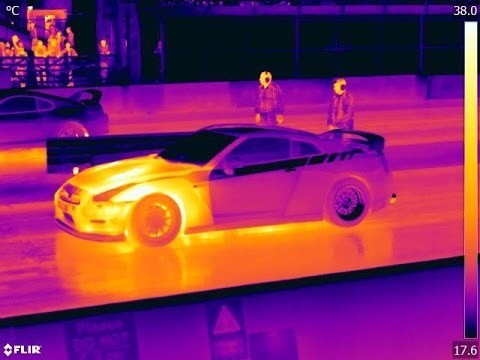Extremely small tubes of carbon have the potential to make excellent night vision cameras for future self-driving cars due to their unique optical properties.
Self-driving cars are just around the corner and will likely become part of our daily life in the next 5 years, however improvement in their vision at night and in harsh weather conditions (fog, rain, snow) are still necessary for them to become economically viable. Currently, they use expensive light radar systems that perform well during the night but poorly during bad weather. One way to see things in the dark and in harsh weather is to look at the thermal footprint of the environment.
All objects in the world, no matter what their temperature, emit a small amount of heat as infrared radiation, which can be seen by a thermal camera. Carbon nanotubes can be seen as a chain link fence made of carbon atoms that is rolled together in a tube. They have a remarkable property of absorbing visible and infrared (IR) light. The world record for blackest material (Vantablack) is actually made from carbon nanotubes.
When carbon nanotubes absorb infrared light, their temperature increases and at the same time their electrical resistance decreases. This property can be used to measure the intensity of the incoming IR light (heat) and relate it back to the temperature of the object that emitted it. By having an array of carbon nanotube IR detectors, one can create a thermal image of the environment (like the one shown in the picture) which does not depend on light conditions. In addition, IR light can penetrate through fog/rain and snow.
The purpose of my project is to develop a bridge structures (like the ones shown above) made of carbon nanotubes that would maximize the absorbance of IR light and provide the strongest response.
NanoDTC PhD Associate 2017

